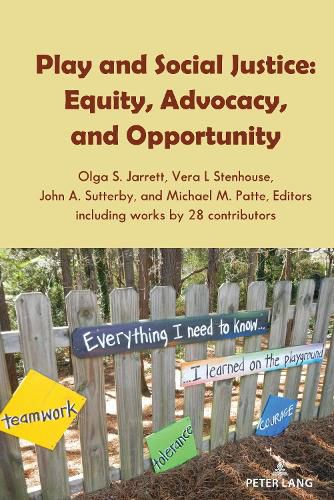Readings Newsletter
Become a Readings Member to make your shopping experience even easier.
Sign in or sign up for free!
You’re not far away from qualifying for FREE standard shipping within Australia
You’ve qualified for FREE standard shipping within Australia
The cart is loading…






This title is printed to order. This book may have been self-published. If so, we cannot guarantee the quality of the content. In the main most books will have gone through the editing process however some may not. We therefore suggest that you be aware of this before ordering this book. If in doubt check either the author or publisher’s details as we are unable to accept any returns unless they are faulty. Please contact us if you have any questions.
The importance of play for healthy development is undeniable. Aspects of play have been linked to the development of social skills, health and fitness, motivation, curiosity, innovation, imagination, and problem solving. Both theory and research suggest that play of various types is critical for healthy development and that playfulness is an important quality across the life span. However, opportunities to play and quality of play facilities in schools, after-school programs, childcare centers, community parks, and museums are not equitable by race, socio-economic status, and ability. And racial profiling, immigrant status, illness, and incarceration interfere with child's play. The first section of the book defines play and social justice and describes disparities in play opportunities in childcare, schools, and communities as well as inequities in how play is interpreted. The next section describes pre-school, elementary, high school, and university programs that use play to liberate, teach, and build community as well as after-school, hospital, and community programs that help to level the playing field of opportunity. The final part of the book discusses ways to ameliorate inequities through research and advocacy. Four research methods are described that are useful for conducting studies on the amount of play children experience, attitudes toward play, and the effect of play on other variables. Finally, a child, a parent, and a teacher describe ways they tried to obtain more recess, using various methods of advocacy. The appendix provides resources indispensable for those convinced that play for all is indeed a social justice issue worthy of advocacy.
$9.00 standard shipping within Australia
FREE standard shipping within Australia for orders over $100.00
Express & International shipping calculated at checkout
This title is printed to order. This book may have been self-published. If so, we cannot guarantee the quality of the content. In the main most books will have gone through the editing process however some may not. We therefore suggest that you be aware of this before ordering this book. If in doubt check either the author or publisher’s details as we are unable to accept any returns unless they are faulty. Please contact us if you have any questions.
The importance of play for healthy development is undeniable. Aspects of play have been linked to the development of social skills, health and fitness, motivation, curiosity, innovation, imagination, and problem solving. Both theory and research suggest that play of various types is critical for healthy development and that playfulness is an important quality across the life span. However, opportunities to play and quality of play facilities in schools, after-school programs, childcare centers, community parks, and museums are not equitable by race, socio-economic status, and ability. And racial profiling, immigrant status, illness, and incarceration interfere with child's play. The first section of the book defines play and social justice and describes disparities in play opportunities in childcare, schools, and communities as well as inequities in how play is interpreted. The next section describes pre-school, elementary, high school, and university programs that use play to liberate, teach, and build community as well as after-school, hospital, and community programs that help to level the playing field of opportunity. The final part of the book discusses ways to ameliorate inequities through research and advocacy. Four research methods are described that are useful for conducting studies on the amount of play children experience, attitudes toward play, and the effect of play on other variables. Finally, a child, a parent, and a teacher describe ways they tried to obtain more recess, using various methods of advocacy. The appendix provides resources indispensable for those convinced that play for all is indeed a social justice issue worthy of advocacy.